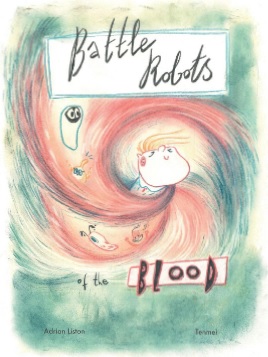An interview with Stephanie Humblet-Baron
 Saturday, December 23, 2017 at 11:19AM
Saturday, December 23, 2017 at 11:19AM An interview between Dr Liesbeth Aerts and Dr Stephanie Humblet-Baron on her recent paper in JACI:
 Can you summarize the significance of your findings in a few sentences for people outside your field?
Can you summarize the significance of your findings in a few sentences for people outside your field?
Working in the field of primary immunodeficiency disorders, we described a new mouse model for severe combined immunodeficiency (SCID), recapitulating the key clinical features of SCID patients suffering of both immunodeficiency and autoimmunity (leaky SCID). Importantly our model proposed a novel efficient therapeutic approach for this disease.
What made the paper particularly outstanding?
Due to the pre-clinical evidence of a drug efficiency to treat a rare disease, patient clinical trials can be directly proposed. This treatment is already approved for human use in arthritis, so it could be rapidly be repurposed for leaky SCID patients. In addition, our model is available for further pre-clinical assay, including gene therapy.
When did you realize you were on to something interesting?
When I started to work with this model I already knew which gene was mutated (Artemis). However when I saw the mice for the first time I could tell that they were developing the exact same symptoms that we see in the clinic. I knew that other mouse models working on this gene had never seen leaky SCID symptoms, so I knew we needed to explore in depth the model. The other key moment was after treating our mice with the drug (CTLA4-Ig) – it completely blocked disease, making this a very valuable project with new therapeutic opportunities for patients.
Did the technology available at the department make a difference?
The FACS core was the major technique used for investigation this project.
A huge amount of work and energy must have gone into the paper. How did you cope with stress and doubts?
Liesbeth this is a joker question!
The project went actually quite smoothly, the hard time I got during this project was rather adjusting myself with motherhood and life in science at the same time.
What are you personally most proud of?
This work can be seen as translational medicine, with direct therapeutic benefit for the patients. The ability for better understanding the mechanism of the disease was also valuable to me.
Can you share some advice for others?
Always envision your project as a story to write and tell. When you find a new result ask what would be the next question and continue to explore it further.





Reader Comments